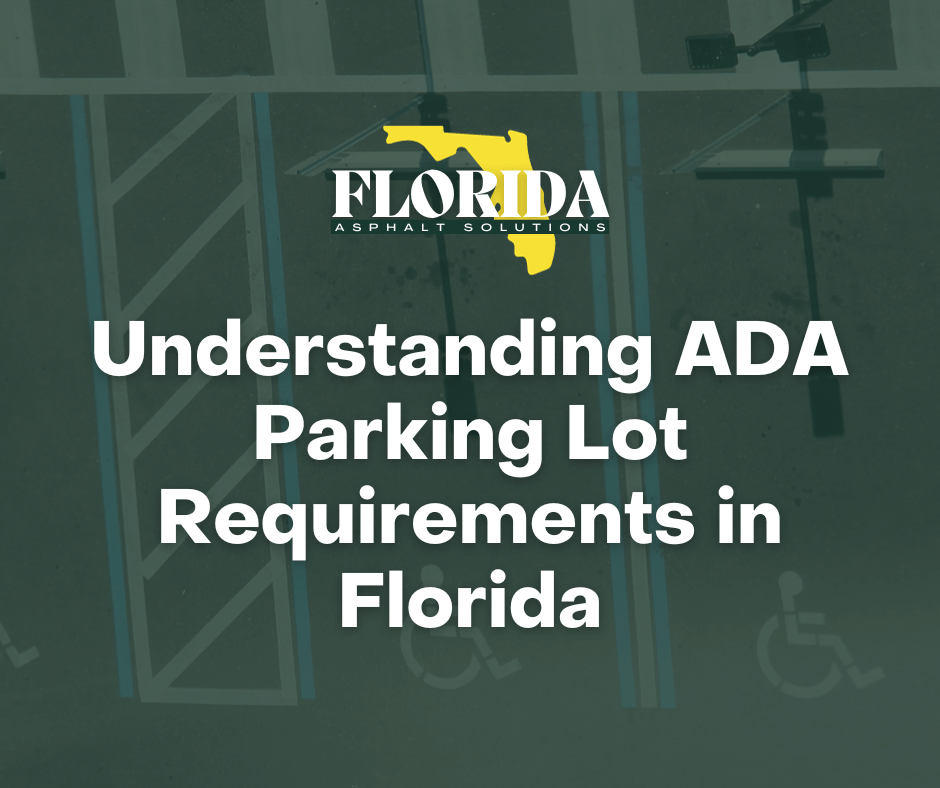
Understanding ADA Parking Lot Requirements in Florida
Discover the key guidelines for ADA-compliant parking lot design in Florida. From space dimensions to signage, ensure your parking area is accessible and inclusive for all. Florida Asphalt Solutions offers expert guidance on ADA parking lot requirements.
What’s the significance of ADA? The Americans with Disabilities Act (ADA) came into existence in 1990, aiming to provide equal access to public spaces for individuals with disabilities. One of these spaces is parking lots, which, for many, is the initial point of interaction when visiting businesses or public buildings. In this piece, we delve into the specific criteria for parking lot accessibility under the ADA guidelines relevant to Florida.
Key Considerations for an ADA Compliant Parking Lot
When mapping out an ADA-compliant parking lot, numerous factors come into play. The following are pivotal guidelines to consider:
- Count of Accessible Parking Spaces: Based on the overall number of parking spaces, there’s a requisite number of accessible spaces. For every 25 slots, or its fraction, at least one should be accessible. For instance, a 100-space lot should house at least four such spaces.
- Dimensions for Accessible Spaces: To accommodate those using wheelchairs or similar mobility aids, each accessible space should span at least 96 inches in width. Additionally, there should be an adjacent access aisle, measuring a minimum of 60 inches in width.
- Van-Accessible Spaces: Beyond the standard accessible spots, spaces tailored for vans equipped with wheelchair ramps or lifts are mandatory. These should have a width of at least 96 inches and an adjoining access aisle with a similar width.
- Markings: The International Symbol of Accessibility should prominently mark all accessible spaces and aisles. Regular maintenance is vital to ensure the markings remain discernible.
- Accessible Routes: From every accessible parking space, there must be a clear, accessible route leading to the building or facility’s entrance. This pathway should be devoid of obstructions and offer a slip-resistant surface.
- Curb Ramps: Any pedestrian pathway encountering barriers like curbs requires a ramp. This ramp should be a minimum of 36 inches wide and have a slope not exceeding 1:12.
- Signage & Lighting: Clear signage indicating accessible spots and routes is crucial, positioned at 60 inches from the ground. Furthermore, ample lighting ensuring safe navigation for all, especially those with disabilities, is non-negotiable.
Accessibility isn’t just a legal requirement; it’s a testament to inclusivity and care for every individual. Consistent upkeep of accessibility features ensures that your parking space remains universally usable. To dive deeper into ADA compliance nuances, refer to ADA.gov’s section on accessible parking spaces.
In Florida and need assistance with designing, building, or upkeeping an ADA-compliant parking lot? Florida Asphalt Solutions is here to help. Our seasoned team is equipped to guide you through ADA requirements, ensuring your parking area remains safe and inclusive for all. Touch base today to learn more!
NOTE: This article primarily serves informational objectives and doesn’t substitute legal counsel. For legal advice or concerns, it’s recommended to consult with an attorney and reference ADA.gov.
